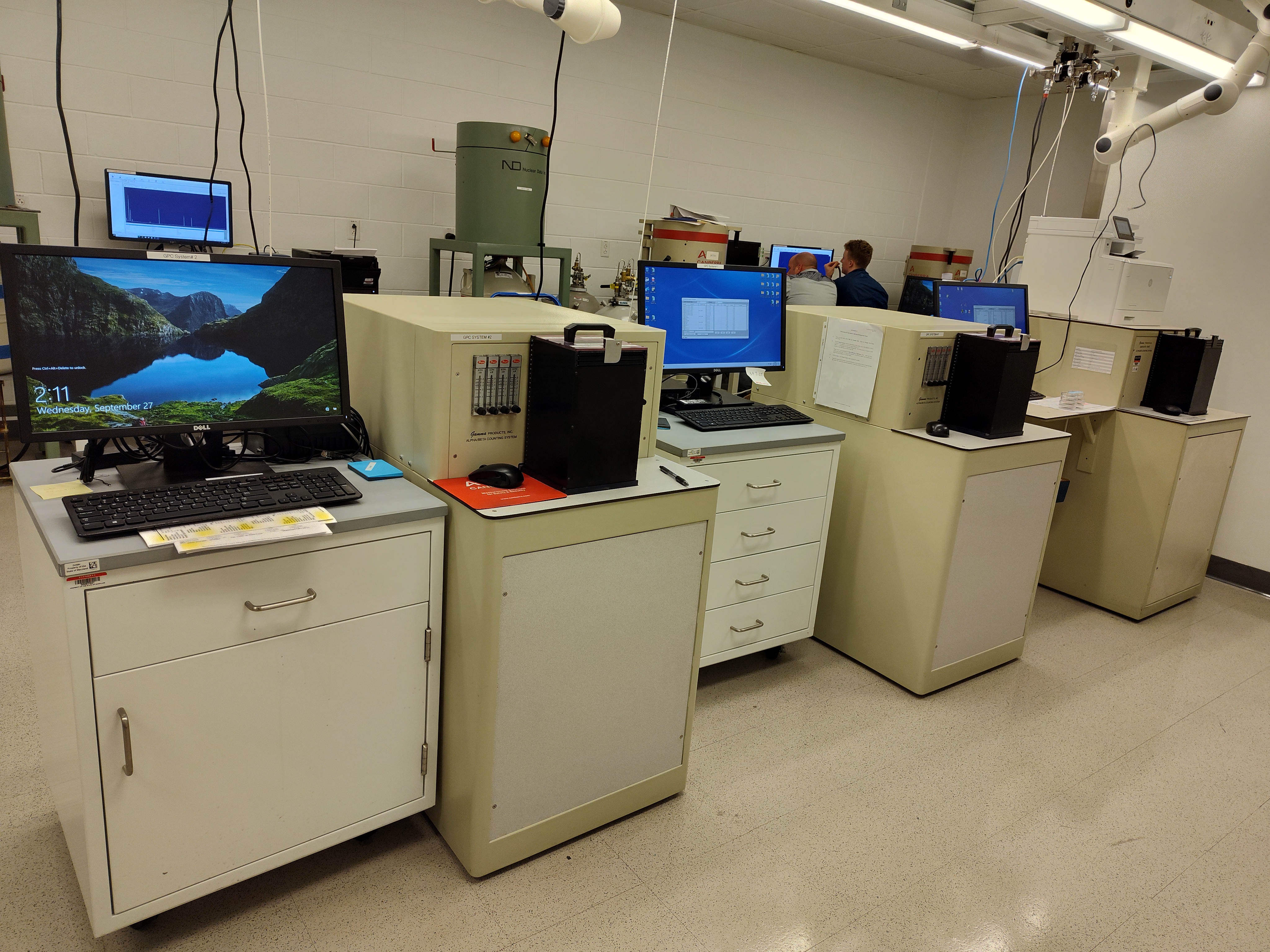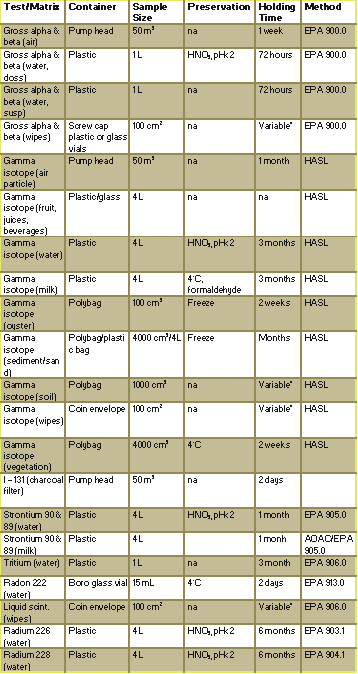Purpose
The Radiation Section analyzes samples for regulatory monitoring and enforcement as well as for research, emergency response and surveillance. The laboratory supports several programs including Maryland Dept. of Environment (MDE) Air and Radiation Management Administration (ARMA), the Department of Natural Resources (DNR), and the Food and Drug Administration (FDA) Food Emergency Response Network (FERN).
The lab is certified to perform analysis of drinking water parameters through the Environmental Protection Agency (EPA) Region III.
The laboratory has a radioactive material license filed with MDE Maryland Radiation Control which allows for the possession of radioactive material within the lab.
Instrumentation
- Gas Proportional Counter
- Gamma Detectors
- Alpha Spectrometer
- EZ Microwave Digestion System
- Alpha/Beta Counting System
- Liquid Scintillation Counter
- Ludlum Alpha Counter
Alpha Spectrometer
Alpha Spectrometer is used for the analysis of:
Alpha emitters
Gas Proportional Counter
 Gas Proportional Counter is used for the analysis of gross a/beta, Radium—228 and strontium
Gas Proportional Counter is used for the analysis of gross a/beta, Radium—228 and strontium
Radioactive contamination and radiation exposure could occur if radioactive materials are released into the environment as the result of an accident, an event in nature, or an act of terrorism. Such a release could expose people and contaminate their surroundings and personal property.
Radiation can affect the body in a number of ways, and the adverse health effects of exposure may not be apparent for many years. These can range from mild effects, such as skin reddening, to serious effects such as cancer and death, depending on the amount of radiation absorbed by the body (the dose), the type of radiation, and how and for how long the person was exposed.
Gamma Detectors
Gamma Detectors are used for analysis of:
Gamma emitters
Elements Routinely Analyzed
Radioanalytes of interest which are analyzed in the lab are based on historical nuclear fallout, nuclear plant discharges, natural background radiation and possible terrorist attacks.
Analytes include: gross alpha, gross beta, Radium, Radon, Tritium, Gamma emitters (Cesium-137, Potassium-40, Iodine-131, Beryllium-7), Strontium, Beta emitters (phosphorus-32, carbon-14, sulfur-35) and Alpha emitters (plutonium-239/240, americium-241, and polonium-210).

NA = not applicable * from pre-sampling weight to final exposed weight. Exposed filters unrefrigerated are stable for 10 days
Potential Health Concerns and Environmental Effects
Radiation is found naturally in the environment from cosmic energy and natural elements as well as man-made through modern technology. There are two types of radiation: non-ionizing and ionizing. Non-ionizing radiation has low frequency and energy. We take advantage of the properties of non-ionizing radiation for common tasks. For example microwave radiation is used for telecommunications and heating food, infrared radiation is used in infrared lamps to keep food warm in restaurants, and radio waves are used in broadcasting. Non-ionizing radiation, on the other hand, has higher frequencies and enough energy to break chemical bonds in the body. There are three main kinds of ionizing radiation: alpha particles, beta particles, gamma rays and x-rays. The severity or type of health effects caused by exposure to ionizing radiation depends on the type of radiation, type of exposure, amount of radiation and the length of exposure. Different types of radiation vary in their ability to damage different kinds of tissue. Radiation and radiation emitters can expose the whole body (direct exposure) or expose tissues inside the body when inhaled or ingested. A variety of cancers have been associated with exposure to ionizing radiation including leukemia, and cancers of the lung, stomach, esophagus, bone, thyroid, and the brain and nervous system. Exposure to ionizing radiation also may damage developing embryos and fetuses and may damage parental genetic material (DNA).
Stochastic and non-stochastic effects are categories associated with the health effects of radiation exposure. Stochastic effects are associated with long-term, low level exposure to ionizing radiation. Chronic exposure (continuous or intermittent) to low levels of ionizing radiation typically has delayed effects. Some of these effects may include genetic defects, cancer, pre-cancerous lesions, benign tumors, skin changes and congenital defects. Non-stochastic effects are caused by exposure to high levels of radiation in a short period of time. There are two levels:
- Acute exposures (i.e., one large dose or a series doses for a short period of time) can cause both more immediate and delayed effects. The more immediate effects may include radiation sickness (e.g. hemorrhaging, anemia, loss of body fluids and bacterial infections). Delayed effects of acute exposure may include genetic defects and cancer as along with sterility.
- Exposure to extremely high levels ionizing radiation can result in death within hours, days or weeks.

